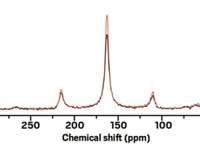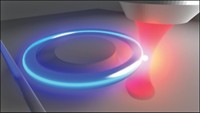Advertisement
Grab your lab coat. Let's get started
Welcome!
Welcome!
Create an account below to get 6 C&EN articles per month, receive newsletters and more - all free.
It seems this is your first time logging in online. Please enter the following information to continue.
As an ACS member you automatically get access to this site. All we need is few more details to create your reading experience.
Not you? Sign in with a different account.
Not you? Sign in with a different account.
ERROR 1
ERROR 1
ERROR 2
ERROR 2
ERROR 2
ERROR 2
ERROR 2
Password and Confirm password must match.
If you have an ACS member number, please enter it here so we can link this account to your membership. (optional)
ERROR 2
ACS values your privacy. By submitting your information, you are gaining access to C&EN and subscribing to our weekly newsletter. We use the information you provide to make your reading experience better, and we will never sell your data to third party members.
Analytical Chemistry
A new way to see NMR signals
September 4, 2006
| A version of this story appeared in
Volume 84, Issue 36
Nuclear magnetic resonance signals have nearly always been observed in the same way: by measuring magnetically induced voltage changes that occur when atomic nuclei are hit with tuned radio waves. But physicist Michael V. Romalis and coworkers at Princeton University now report a new way under the sun-or at least under a laser beam-to carry out NMR measurements in liquids (Nature 2006, 442, 1021). Nuclear-spin optical rotation (NSOR), the technique they've developed, creates NMR signals by detecting phase shifts induced in a laser beam by nuclear spins as the beam passes through a liquid. The sensitivity is currently several orders of magnitude lower than that of regular NMR, but Romalis and coworkers see ways to overcome this shortcoming. In a commentary, Warren S. Warren of Duke University notes an advantage of NSOR, that it has about 100 times better spatial resolution than conventional NMR. "Bringing the power of modern optics to NMR detection could greatly improve image resolution and perhaps even sensitivity," Warren notes hopefully.




Join the conversation
Contact the reporter
Submit a Letter to the Editor for publication
Engage with us on Twitter